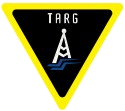 Friday the 1st of March 2013 saw an interesting look into the history of Radar in the UK, courtesy of Andy Tyler G1GKN.
Friday the 1st of March 2013 saw an interesting look into the history of Radar in the UK, courtesy of Andy Tyler G1GKN.
The evening, hosted by the Thames Amateur Radio Group on Canvey Island, started at 7:30pm with members and non-members gathering for tea, cake and the opportunity to chat and mingle.
A video featuring an edited version of a video showing the recent Foundation training course was shown whilst the audience settled in for the main talk by Andy.
Accompanying Andy for his talk, was an impressive model of a Chain Home tower, pictured here, and before discussing the tower itself, the history and origin of Radar was discussed.
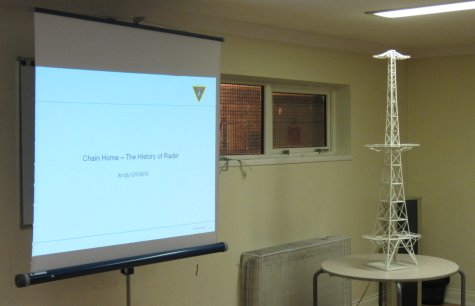
The Origins of Radar
Andy told us that the first demonstration of a radar-like system was back in 1904. It was intended for use on ships, and had a detection range of just 3km. Following the 1912 Titanic disaster, calls were made for a detection system for icebergs. With the threat of World War I on the horizon, the Allied Submarine Detection Investigation Committee (ASDIC) was formed to find a technology to detect German U-boats.
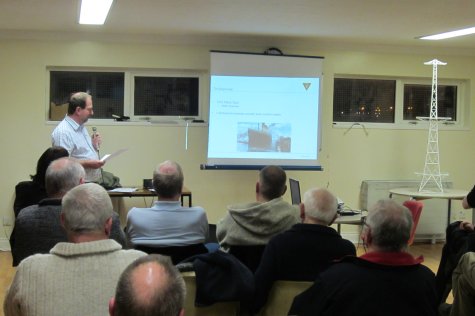
The birth of Radar
1930s air defense in the UK was pretty primitive, relying mostly on acoustic mirrors, and in 1934, another committee, the Committee for the Scientific Study of Air Defense (CSSAC) was formed. After some discussion of the invention of a Death Ray, attention was turned to detection and in 1935, the Daventry Experiment was born. Robert Watson-Watt and Arnold Wilkins were able to detect a Heyford bomber successfully from a range of around 8 miles, completing a successful test of what became Radar.
A short video followed, before discussion of secret experiments at Orfordness in Suffolk, where the detection range was extended to around 100km.
Chain Home Towers
Originally known by the designation AMES (Air Ministry Experimental Station) Type 1, each station had three 360 foot transmitter towers capable of an output power of 1MW. Wooden receiver towers were sited around half a mile way.
The system worked by pushing out a powerful pulse of RF. Any target ‘hit’ by the pulse would scatter the RF, and the returning signal could be used to plot contacts. Information on the height and direction of contacts was relayed to a plotter room and action could be taken.
By 1939, 21 Chain Home stations were operational.
The next development was IFF (Identification of Friend or Foe). The concept of an aircraft transponder for aircraft identification, first introduced in 1939, is still in use today.
World War II
Chain Home played a vital part in the Battle of Britain, and Andy pointed out that without Chain Home and RDF (Radio Direction Finding), we’d all probably be speaking German. As the war progressed, a more versatile system using microwave Radar came into action, but Chain Home was still used as a system to detect launch sites for V2 rockets.
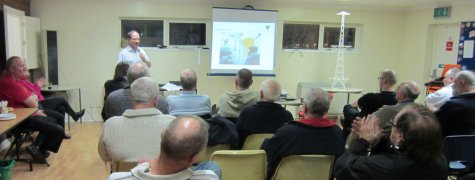
Chain Home, post war
The system was effectively obsolete by 1945 and many of the towers were dismantled. Andy informed the audience that only five of the historic towers now remain: Dover, Great Bromley, Stenigot, Stock Holy Cross, and Great Baddow.
The Chain Home tower now at BAE in Great Baddow was originally one of the Canewdon towers, and was moved to be used for the Blue Streak ICBM project in 1956. Interestingly, Andy mentioned that the Canewdon site was used in the 1960s and 1970s by the UK Government to jam the pirate radio stations operating off the Essex coast.
In subsequent years, the Baddow tower has been used for a number of test projects by BAE systems, however the future of the Great Baddow Chain Home tower is uncertain. As the last complete tower in the UK, it would be a great shame if this important historical asset couldn’t be preserved. We owe a lot to the Chain Home Towers, and to the pioneering work of those behind Radar research.
Thanks very much to Andy for a fascinating talk on the history of Radar, a detailed description on the Chain Home technology, and for more on the historic landmark familiar to many Essex hams driving around Chelmsford.
As an aside, Pete M0PSX from Essex Ham was lucky enough to join Andy G1GKN and several other amateurs to work from the foot of the Gt Baddow Chain Home Tower as part of the 2012 commemoration of the Titanic disaster. For details of the day, see the following Essex Ham report: Chlemsford ARS working from Chain Home, Gt Baddow April 2012
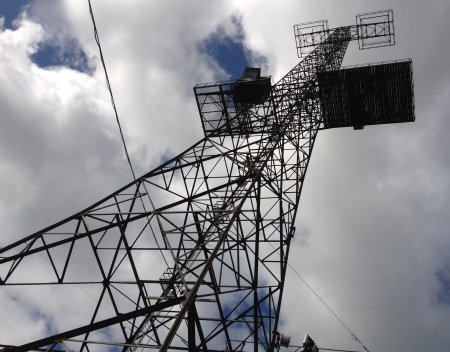
Thames ARG Club Night
The club night held by the Thames Amateur Radio Group on Canvey attracted the largest attendance of a club night so far, and the raffle also proved popular, with prizes including a T-Shirt and a 2m/70cm handheld. Well done to Fred M6BZW for having the winning ticket and walking away with a handheld.
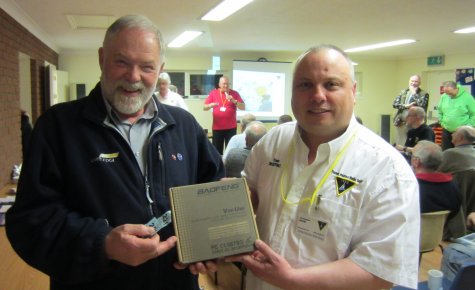
A good night and a fascinating topic.
Related Links
- Thames Amateur Radio Group Club Profile
- Amateur Radio Clubs in Essex


I had the good fortune to meet Arnold Wilkins when I was the sound recordist on the documentary series “Secret War” directed by Brian Johnson . At the end of the day Arnold wished me best 73’s OM. with a smile !
We visited Stenigot last year on holiday , now used for training I beleive. We also attended the 75 years of Radar celebration at Weedon.
I tried to save this web page as part of my radar archive but was unable to. I am sorry I was unable to attend as I live in Berkshire.
73, de
Graham bedwell G3XYX.
Iam doing a bit of homework on Great Baddow Chain Home site, have been to Stenigot last year and hope to go to GB this year, look forward to seeing this early, early warning system, the tech and secrecy during the war must of been interesting. Thanks for a good lecture !
Sarah Dowe
VK3SD
73
Hi Sarah,
Yes, fascinating topic. The tower at Great Baddow is now on private land, so it’s hard to get close, but it’s a prominent feature on the skyline in Baddow. If you have any questions, I can try to put you in touch with Andy Tyler, who gave the talk.
Regards,
Pete
Dear Sirs/Madam
I have recently returned from a short holiday on the I o W. During my holiday I visited Ventnor Heritage Museum and purchased a copy of their ‘Brief History’. On pages 14 & 15 is a description of the ‘Chain Home’ Radar station which used to be situated above the town during WW11. My father , William Alexander Bennett BSc, C Eng. AMIEE. D o B 9/12/1903, was responsible for the setting up of the heavy switchgear and power supply systems for the transmitters. He was seconded from the BBC Engineering Division to the Air Ministry between 1936 and 1950 and worked from a ‘wooden hut’ at RAF Droitwich. Various abbreviations such as S.D.& I.D., D & I.D. and P.& I.D. occur in his job titles and I am told that P & I D refers to the Planning and Installation Department of the BBC Engineering division. (I was born in Bromsgrove, near Droitwich in 1943.) In later, post war, years I believe he was also involved with the radio station at BBC Daventry (near Rugby). My father was always very secretive about his ‘war work’ and I have been trying to find out more without success – can you help please?